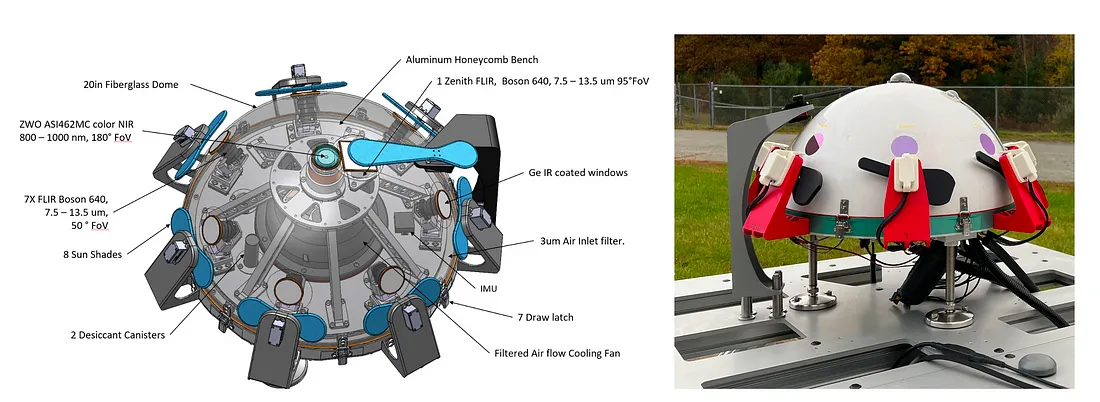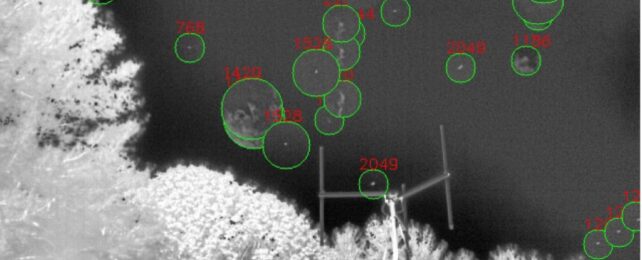In 2021, the Office of the Director of National Intelligence (ODNI) released a report detailing recently declassified information on Unidentified Aerial Phenomena (UAP).
Since then, the Department of Defense has released annual reports on UAP through the All-domain Anomaly Resolution Office (AARO). Nevertheless, there is still a lack of publicly available scientific data.
To address this, a new study led by the Harvard-Smithsonian Center for Astrophysics (CfA) and the Galileo Project proposes an All-Sky Infrared Camera (Dalek) to search for potential indications of extraterrestrial spacecraft.
The study was led by Laura Domine, a member of the Keto-Galileo Postdoctoral Fellowship at Harvard University and a researcher with the Galileo Project.
She was joined by fellow researchers from the CfA, the Galileo Project, the Whitin Observatory, the Scientific Coalition for UAP Studies, and Atlas Lens Co.
The paper summarizing their proposal was presented at the 2025 Lunar and Planetary Science Conference (2025 LPSC), which took place from March 10th to 14th in The Woodlands, Texas.
The instrument they describe in their paper is nicknamed Dalek, given its resemblance to the machine antagonists from the Doctor Who franchise (image above). This instrument builds on recommendations made by NASA in a 2023 independent study, where they stated:
"Purpose-built future sensors for UAP detection should be designed to adjust on millisecond timescales to aid better detection. In lockstep, alert systems should detect and share transient information quickly and uniformly… Multisensor platforms are important for providing a complete picture of a UAP event. An object's motion should be recorded, as well as its shape (imaging data), color (multispectra or hyperspectral data) and any sounds and other characteristics."

Their paper details this multimodal, multispectral ground-based observatory, the first instrument to undergo commissioning at the Galileo Institute's development site, and the calibration process.
Professor Avi Loeb, the Frank B. Baird Jr. Professor of Science at Harvard University, the Director of the Institute for Theory and Computation (2007-present) within the CfA, is also the Head of the Galileo Project (2021-present). As he told Universe Today via email:
"Often U.S. government data is classified, either because it was collected by classified sensors or because it is not fully understood and could potentially be relevant for national security. When in doubt, the data is not released to the public or the scientific community. However, the sky is not classified, and so the Galileo Project is operating an all-sky observatory at Harvard University and constructing two other observatories in Pennsylvania and Nevada that are searching for anomalous objects in the infrared, optical, radio, and audio bands."
As Loeb detailed, these three observatories detect about 100,000 objects per month each and have already obtained data on about 1 million objects. This is the largest database systematically assembled on NEOs, which the Galileo Project analyzes using machine-learning software.
This software consists of a You Only Look Once (YOLO) model for object detection and a Simple Online and Realtime Tracking (SORT) algorithm for trajectory reconstruction.
These algorithms are trained on familiar objects (planes, drones, balloons, birds, satellites, etc.), which allows them to sort through all observed UAPs and detect outliers. In addition, the paper contains a rundown of the observatory's first five months of operation.
As the team stated in their paper, roughly 500,000 objects were detected in this period. About 16% of the trajectories they reconstructed (~80,000) were flagged as outliers at a 95% confidence level and manually examined with infrared images.
From these, 144 trajectories remained ambiguous, which they state are likely mundane objects that cannot be further classified without information, distance, and other sensor data. Said Loeb:
"In the first five months of commissioning data reported in this paper, we studied half a million objects and assessed our ability to classify them without distance information. In the future, we hope to measure distances to objects based on triangulation by multiple detectors spaced apart within each observatory. This will allow us to determine the velocity and acceleration of various types of objects and clearly identify anomalous ones."
By comparison, classified studies performed by governmental agencies such as the AARO - which can often leverage distance estimations from radar data and multiple sensors - reported that ∼3% of the cases brought to their attention remained ambiguous.
The ultimate goal, said Loeb, is to find the few (if any) outliers that could be considered evidence of a technologically advanced species (aka. technosignatures). Said Loeb:
"Our goal is to check if there are any objects which display anomalous flight characteristics or shapes. Even if one in a million happened to show abilities beyond human-made technologies, it would constitute the biggest scientific discovery ever made. Such an object could suggest the existence of an extraterrestrial technological civilization from which we can learn about more advanced science and technology than humans developed over the past century."
The full version of their paper was published in the journal Sensors.
This article was originally published by Universe Today. Read the original article.
